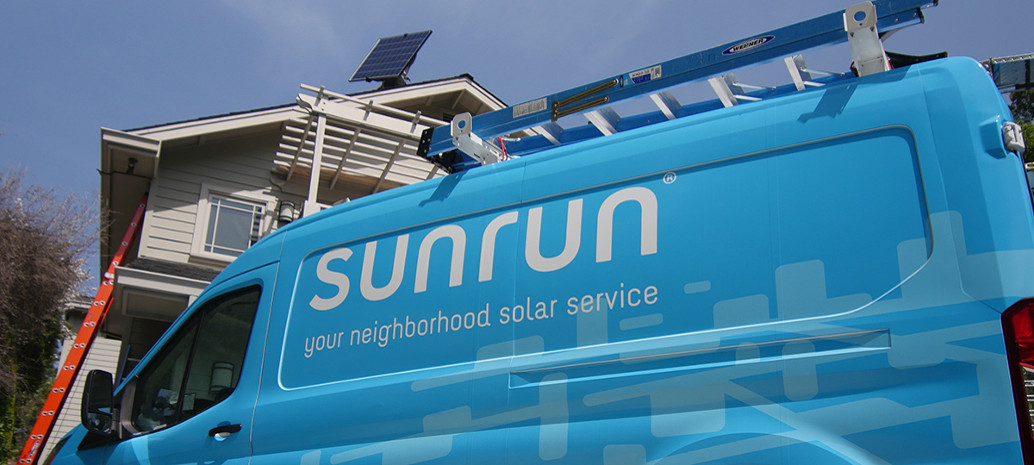While the overall residential solar market is facing headwinds in the United States, one company is still reporting strong growth. As revealed in fourth quarter and full year 2016 results released yesterday, Sunrun deployed 282 MW of PV systems last year, roughly double the residential market’s growth rate of 19%.
Sunrun also grew revenues 49% year-over-year to $454 million, and brought down its cost to deploy new PV systems to $3.41 per watt in the fourth quarter, an 8% year-over-year decline. And while Sunrun’s creation costs are still higher than either national averages or those at Vivint and SolarCity, the company reports that the systems it deploys in-house are $0.67 per watt cheaper than those deployed by its partner installers.
But while the company’s growth is an easy story to tell, its profitability, or lack thereof, is another matter. Sunrun reduced its operating loss in 2016, but still brought in a $215 million operating loss and a net loss of $303 million. This is typical for the third-party solar model, where companies deploy PV systems under lease or power purchase agreement models and retain ownership, leading to quarterly losses but building long-term retained value.
However, the metrics to measure this long-term value are often created by the companies themselves, leading to a lack of standardized metrics. Sunrun has further complicated the process of assessing its financial progress by changing metrics, moving from “estimated retained value” to “earning assets”.
Sunrun says that this will give a more accurate picture of the value it is retaining. “Unlike retained value, which included the value of our backlog, gross earning assets includes only the value of deployed systems,” explained Sunrun Chair Edward Fenster on the company’s Q4 earnings call. “Gross earning assets represents the state of our deployed assets as of the reporting date.”
The company’s net earning assets, which takes into account project level debt and lease pass-through financing obligations, grew 30% during 2016 to over $1 billion. Sunrun also increased its cash position in 2016 marginally to $206 million at the year’s end.
In addition to its financial growth, Sunrun also reported significant business innovations during 2016. The company launched its Brightbox solar plus storage product during the year, and says that it has reached over 1,000 orders for BrightBox in California and Hawaii alone, representing over 20 megawatt-hours (MWh) of energy storage.
This is a key play for both markets. Hawaii has moved from net metering to a self-consumption model, which Sunrun fought fiercely against, and which requires PV systems to be paired with storage to be viable. Meanwhile, two of the three investor-owned utilities in California have moved to “Net metering 2.0” including mandatory time of use rates, which gives an edge to systems paired with energy storage.
As the largest solar market in the nation California is a big deal for Sunrun and all national solar installers. And while Sunrun noted some weakness in the California market during the fourth quarter, it says that its business is recovering.
“We are confident, however, that a rebound is occurring, as lead volumes in California registered by our lead generation business Clean Energy Experts have increased each month from the December lows,” stated Sunrun CEO Lynn Jurich on the company’s results call. “There are still five times more solar-ready homes in California that are currently installed and the emergence of storage will be a significant growth market in the state.”
No company has fought to maintain net metering policies more fiercely than Sunrun, including its policy activities through the Alliance for Solar Choice. And while this put it in a position of enmity versus many utilities, Sunrun is now changing tack under a partnership with National Grid, under which the utility will contribute $100 million in cash equity to a partnership to own around 200 MW of residential PV systems nationally.
Through the partnership National Grid will also work with Sunrun to explore options for how solar and storage may be aggregated and used as an asset on the grid. Sunrun says that this is part of a change in attitude by utilities towards solar, and notes that 42 utilities have invested in distributed energy companies to date.
“we believe we are moving from utilities trying to block rooftop solar to them accepting its inevitability and investing time and capital in the sector,” stated Jurich.
Sunrun expects its growth to continue in 2017, but its expectations are more muted. The company expects to deploy 69 MW of solar during the first quarter of 2017 and 235 MW over the full year, representing 15% year-over-year growth for both the quarter and the year.
This content is protected by copyright and may not be reused. If you want to cooperate with us and would like to reuse some of our content, please contact: editors@pv-magazine.com.



By submitting this form you agree to pv magazine using your data for the purposes of publishing your comment.
Your personal data will only be disclosed or otherwise transmitted to third parties for the purposes of spam filtering or if this is necessary for technical maintenance of the website. Any other transfer to third parties will not take place unless this is justified on the basis of applicable data protection regulations or if pv magazine is legally obliged to do so.
You may revoke this consent at any time with effect for the future, in which case your personal data will be deleted immediately. Otherwise, your data will be deleted if pv magazine has processed your request or the purpose of data storage is fulfilled.
Further information on data privacy can be found in our Data Protection Policy.